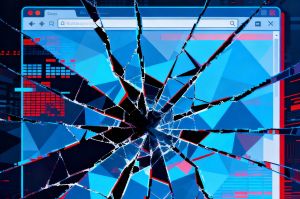 Windows 10 to 11 upgrade: how to clean drive afterwards
Windows 10 to 11 upgrade: how to clean drive afterwards
You may be sincerely in love with your Windows 10, or have some software that won’t run on later versions of the operating system, or simply feel too conservative to upgrade. But, sooner or later, upgrade you must. First off, because Microsoft will ultimately – in less than a year, on October 14, 2025 – end free support of Windows 10, and secondly, because reverse compatibility with Win 10 will be a more and more annoying problem.
Not to worry, though: by now, Windows 11 has already been cured of all noteworthy teething troubles, and it looks and feels great. For your information, as of this writing (late December of 2024), the share of Windows 10 globally is a little shy of 62%, while that of Windows 11 is almost 35%. Naturally, the latter has been growing steadily, and the former shrinking.
The process of upgrading to Windows 11 is quite straightforward, and it’s covered below, just in case. Getting rid of the no longer needed data afterwards is a somewhat trickier matter, and it is something you have to do manually (or wait 10 days for the system to purge itself automatically). This article gives you ways to clean a hard drive after installation of Windows 11.
How to upgrade to Windows 11?
First things first. As mentioned above, there is nothing complicated about migrating to Windows 11. There are two options, basically:
- Go to Settings > Update & Security > Windows Update, click on Check for updates, and after the eligibility check, the system will suggest downloading and installing Windows 11.
- If there’s no such suggestion (happens), go to Microsoft’s website and download the Windows 11 Installation Assistant, run it and follow the instructions on screen.
A post-installation reboot will finalize your transition to Windows 11.
How to clean the drive after Windows 11 installation?
You can remove temporary and other now-useless files after upgrading from Windows 10 to Windows 11 using a routine in the Settings or the Disk Cleanup tool. Both options purge the no longer needed data properly, ultimately deleting the "Windows.old" folder, which contains backup files from your previous Windows installation.
Cleaning up after upgrading to Windows 11 using the Settings routine
- Press Windows+I, or click Start and select Settings there.
- Find System, then Storage in the Settings menu.
- Click on the Temporary files option on the right side.
- If you’re only after the unnecessary data generated by the Windows 10 to Windows 11 migration, uncheck whatever is checked in the summoned list, and flag the “Previous Windows installation(s)” box.
- Click on the Remove Files button to delete the selected items.
Cleaning the drive after transition to Windows 11 using the Disk Cleanup tool
- Click the Start button, type “Disk,” click the Disk Cleanup item of the resulting list.
- If asked to, select the drive where Windows is installed (C:, in most cases).
- Click on the Clean up System Files button (may require administrator privileges).
- If prompted, check the “Previous Windows installation(s)” option; feel free to purge whatever else there looks no longer needed.
- Click OK, and confirm our decision on the next step.
Important: once you delete these files, there is no turning back. You will lose the ability to return to your previous version of Windows through recovery settings. A clean installation is still a possibility, though.
Using the latest versions of software, be it an operating system or something much less complicated, is a good practice from the perspectives of performance and security. Download and install Software Informer to have the programs on your computer updated automatically, hassle-free:



